A good gaming CPU is the one that brings the perfect balance between features, performance, and the price. Choosing the best gaming CPU for your budget has always been a conundrum, given the sundry options in the market. We at CPUsage have gone through the twisting and toiling on your behalf to present you with the list of our top picks that your money can afford in 2021.
Before we let you get through our list, let us acknowledge a few things first. None of the brands that we have listed below have sponsored us in any way and we do not endorse any of them. The opinions we shared here are very personal and are based on our actual experience with the products. With that said, let us get further.
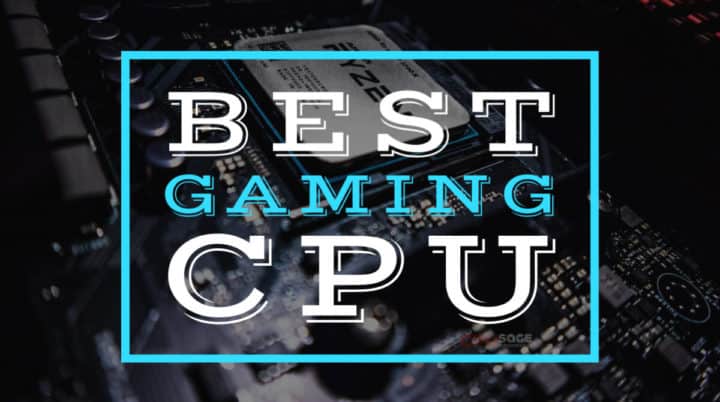
Best Gaming CPU in 2021 – AMD Ryzen or Intel which is good?
Gifting yourself with the most powerful CPU on the market isn’t alone going to help you. It is effective only if you are going to pair it with the right rig. Especially for the gaming freaks out there, bringing in a beasty gaming CPU doesn’t alone create an impact if it isn’t accompanied by a powerful GPU, decent RAM, and storage with faster access speeds. Remember, power is a cumulative factor.
Most people find themselves in the gluepots to decide whether AMD or the Intel that is actually the best. Trust me, this debate has the potential to start another World war. There is active research going on in Area 51 to decide a clear winner. Wink Jokes apart! AMD with its recent lineup has pushed itself in the race giving tough competition to Intel processors. However, most-expensive mainstream Intel processors do slightly better in terms of gaming. When it comes to tasks like content creation and video editing, the AMD processors have an upper hand, thanks to the extra threads and cores.
#1. Intel Core i5-10600K – Best for average gaming chores
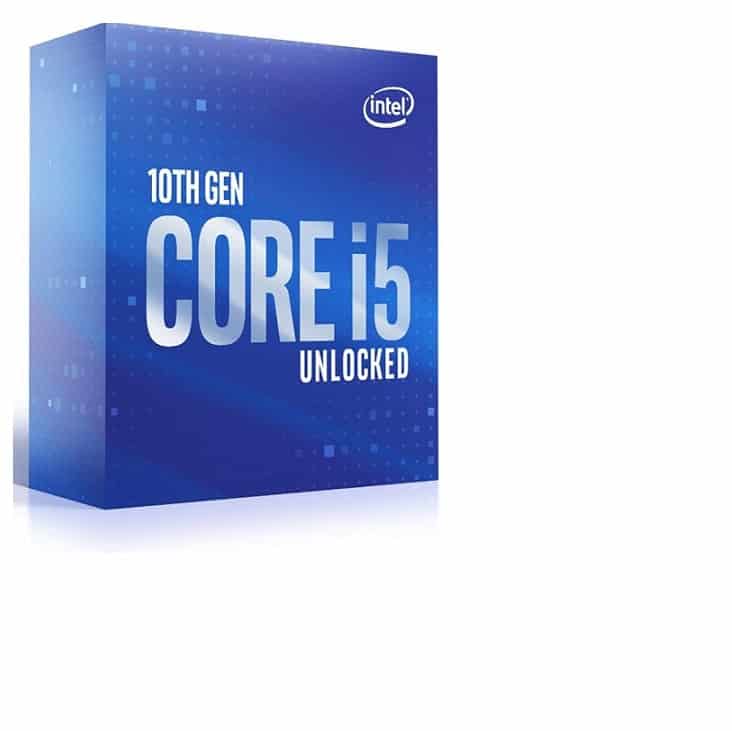
The Intel Core i5-10600K is a deal-breaker for those who are thinking to make the best out of their gaming rig while being economical.
The Intel Core i5 10600K isn’t the fastest out there but trust me, it does better than some priced in-house alternatives, and most AMD processors in the race. While the Core i9 10900K from Intel is the most expensive and powerful dude out there at the time of writing this article, the Intel Core i5-10600K does arguably better in certain aspects especially considering the price for which it is being offered.
| Brand | Intel |
|---|---|
| Cores | 4 |
| Threads | 12 |
| Max turbo frequency | 4.80 GHz |
| TDP | 125 W |
In our initial testing, the six-core 12-threaded Core i5-10600K performed surprisingly well and it is clocked at a 4.1 GHz base and 4.8 GHz boost. It also comes with Intel’s most loved UHD Graphics 630 integrated graphics processor (IGP) and a rather high TDP of 125 watts.
Intel cleverly priced the 10600K keeping the AMD Ryzen 5 3600X in mind. The Intel Core i5-10600K is only compatible with Intel’s new LGA 1200 socket. Most modern models like Z490, H410, B460, and H470 host the LGA 1200 socket. However, if your ardent goal is to unleash the maximum power of your CPU, you might want to opt for a Z490 board as it comes with “K” chip support for overclocking and does better at power handling needed to push a 125-watt i5-10600K CPU.
Technical Specifications, Pros & Cons of -Intel Core i5-10600K
 Tech Specs
Tech Specs
| Lithography | 14 nm |
| Number of cores | 6 |
| Number of Threads | 12 |
| Processor Base Frequency | 4.10 GHz |
| Max Turbo Frequency | 4.80 GHz |
| Cache | 12 MB Intel® Smart Cache |
| Thermal Design Power (TDP) | 125 W |
| Bus Speed | 8 GT/s |
| Memory Type | DDR4-2666 |
| Processor Graphics | Intel® UHD Graphics 630 |
| Graphics Video Max Memory | 64 GB |
| PCI Express Revision | 3.0 |
| Sockets supported | FCLGA1200 |
Final Review
As far as gaming is concerned, the Core i5-10600K is a clear winner. At 1080p, it is faster than most AMD CPUs and does really well with Intel’s own lineup. It easily wins overall Gen 8 and Gen 9 processors with the exception of the Core i9-9900KS. In some aspects, the i5-10600K goes almost near to the latest flagship Core i9-10900K. All these differences are small, barely relevant. When you tend to go up in resolution, these differences shrink further as the bottleneck moves from the CPU to the GPU. If gaming is your only concern, try investing more in the GPU, as that is what helps you in driving your framerates.
#2. AMD Ryzen 5 3600X – Best budget gaming CPU
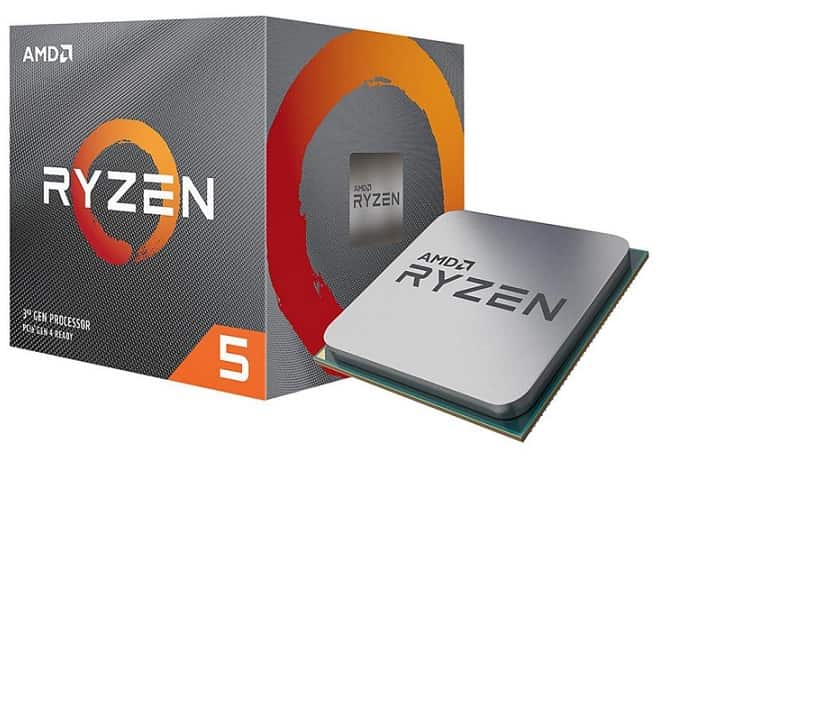
The AMD Ryzen 5 3600X tops the most prestigious release list from the AMD house. Since its release, it has been the choice for gamers seeking a better gaming CPU in the mid-range segment.
AMD mastered the art of building processors to handle multi-threaded workloads. The Ryzen 5 3600X is one such masterpiece that changed the way people looked at AMD. It comes with six-cores and 12 threads like any other Ryzen 3000 series chip. This nifty piece of hardware comes with a 3.8GHz base and a 4.4GHz boost clock and has a TDP of 95-watt.
| Brand | AMD |
|---|---|
| Cores | 6 |
| Threads | 12 |
| Max Turbo Frequency | Up to 4.4GHz |
| TDP | 95 W |
Now feature-proof your build with the aid of the Ryzen 5 3600X with its ardent support for PCI Express 4.0 which most other mid-range gaming CPUs lack. However, if you wish to install a PCIe Gen 4 SSD in your new Ryzen 5 3600X build, you will also need to invest in a motherboard that has the support for PCIe Gen 4 SSD.
The Ryzen 5 3600X boasts a 35MB Level 3 cache which is more than double the 16MB of the preceding Ryzen 5 2600X and Ryzen 5 2600. There is a cheaper alternative, the Ryzen 5 3600 that comes in at 3.6GHz base and 4.2GHz boost. It has a TDP of 65-watt and also shares the support for CPU-based PCI Express 4.0. You might want to opt for this if you wish a nick in your budget while not having to compromise much on specs.
Technical Specifications, Pros & Cons of –AMD Ryzen 5 3600X
 Tech Specs
Tech Specs
| CMOS | TSMC 7nm FinFET |
| Number of cores | 6 |
| Number of Threads | 12 |
| Processor Base Frequency | 3.8 GHz |
| Max Turbo Frequency | Up to 4.4GHz |
| Cache | Total L1 Cache: 384KBTotal L2 Cache: 3MBTotal L3 Cache: 32MB |
| Thermal Design Power (TDP) | 95 W |
| Memory channels | 2 |
| Memory Type | DDR4 |
| Processor Graphics | No |
| System Memory Specification | 3200MHz |
| PCI Express Version | PCIe 4.0 x16 |
| Sockets supported | Socket AM4 |
Final Review
The Ryzen 5 3600X is a performance beast for those who are looking for an affordable top gaming CPU in the mid-range segment. Support for multithreading and newly increased cache size help this nifty device achieve excellent mainstream performance. However, if you can shell out a little extra, you could opt for the Ryzen 7 3700X. Nevertheless, a little cheaper Ryzen 5 3600 can also do the job if you are on a tighter budget.
As the Ryzen 5 3600X does not come with integrated graphics, you should pair it with a potential GPU to get the gaming performance you deserve. However, if you are a casual gamer and don’t deal with high-end graphical stuff, you might want to try a CPU like the AMD Ryzen 5 3400G which comes with a capable built-in graphics processor.
#3. AMD Ryzen 7 3700X – Best for mid-range gaming
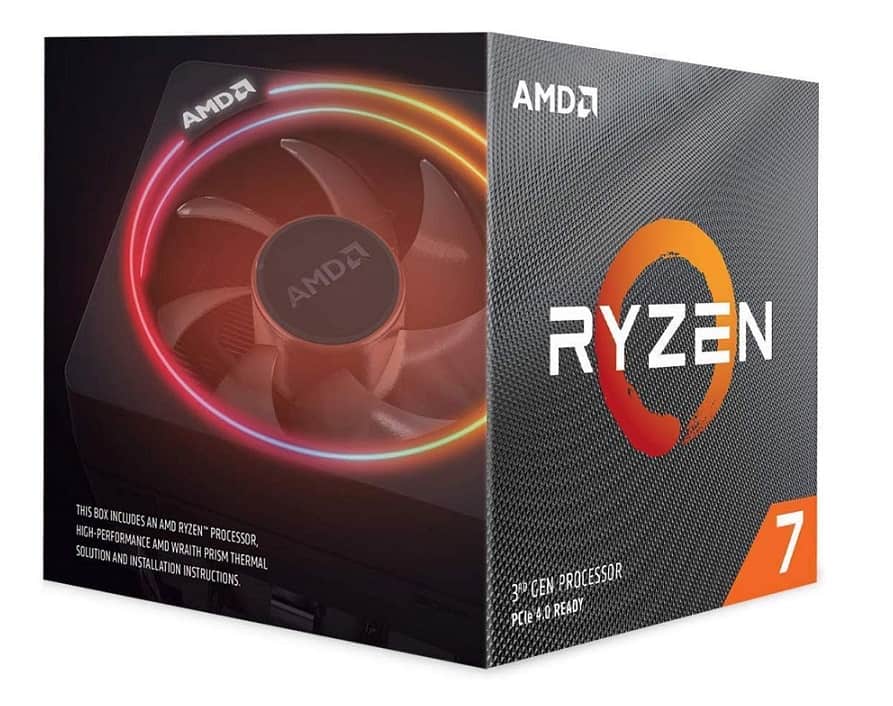
The AMD Ryzen 7 3700X is one of the most reliable and decent gaming CPU options available in the mid-range segment. Let us know why!
AMD clearly has an upper hand when it comes to handling multithreaded workloads. The AMD Ryzen 7 3700X has been carved impressively to deliver the power that the gamers seek. It features eight cores and 16 threads which is plenty for mid-range gaming chores and has a base clock of 3.6GHz which can be boosted up to 4.4 GHz. The processor itself is much affordable considering its performance. Cooling the processor is no hassle, thanks to the thermal management on the chip and the cooler that comes bundled with this CPU.
| Brand | AMD |
|---|---|
| Cores | 6 |
| Threads | 12 |
| Max Turbo Frequency | Up to 4.4GHz |
| TDP | 95 W |
Though the Ryzen 7 3700X has the same number of cores and threads as its predecessors, the new 7nm technology yields much better performance and lower power consumption compared to them. AMD has done the smart work in increasing the IPC (instructions per clock) to over 15% on this gaming CPU when compared to a 2nd Generation processor measured at the same clock speed. The AMD Ryzen 7 3700X boasts a whooping 36MB of total Cache while L2 being 4MB and L3 is 32MB.
The biggest considerable addition to the 3rd Gen Ryzen devices is the support for PCIe 4.0. NVMe SSDs are 51% faster than the non-PCIe 4.0 SSDs. With a decent NVMe SSD, one can achieve sequential read speeds up to a whopping 5000 MB/s. The party doesn’t end here. The PCIe 4.0 when paired with a capable graphics card like the Radeon RX 5700 XT or RX 5700, can perform exceptionally well.
Technical Specifications, Pros & Cons of – AMD Ryzen 7 3700X
 Tech Specs
Tech Specs
| CMOS | TSMC 7nm FinFET |
| Number of cores | 8 |
| Number of Threads | 16 |
| Processor Base Frequency | 3.6 GHz |
| Max Turbo Frequency | Up to 4.4GHz |
| Cache | Total L1 Cache: 512KBTotal L2 Cache: 4MBTotal L3 Cache: 32MB |
| Thermal Design Power (TDP) | 65 W |
| Memory channels | 2 |
| Memory Type | DDR4 |
| Processor Graphics | No |
| System Memory Specification | 3200MHz |
| PCI Express Version | PCIe 4.0 x16 |
| Sockets supported | Socket AM4 |
Final Review
Ryzen 7 3700X is arguably the sensible choice for most users and can be a great CPU to include in your rig. If your only need is to run most modern games at decent frame rates, a beasty chip with fancy cores doesn’t make much sense. The Ryzen 7 3700X can yield the best gaming performance if paired with a top-tier GPU. For instance, the RTX 2080 Ti or RTX 2080 Super can do wonders for you.
The best part is its AM4 backward-compatibility, which technically means that you don’t have to upgrade to a newer version if you already own a motherboard with an AM4 socket. However, if you wish to make use of the processor’s PCI Express 4.0 feature, you should invest extra to get yourself an X570 motherboard for its compatibility with PCIe 4.0.
The two biggest laid downs of the latest AMD CPUs is the limitation on its overclocking and poor single-threaded performance.
#4. Intel Core i9-10900K – Best gaming overall
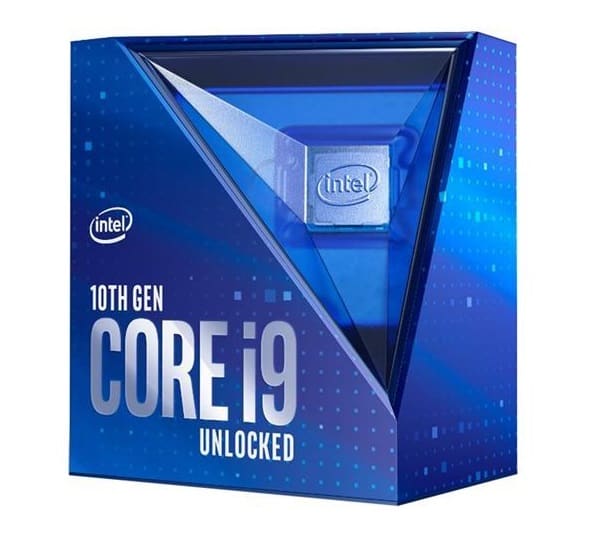
Trust me, the Intel Core i9-10900K can be your go-to destination if you’re on the market looking for the best gaming CPU in Intel Brand.
The performance capabilities of Intel CPUs don’t need an introduction, especially in the gaming world. Intel, with the release of its latest gaming beast, the Intel Core i9-10900K has left its competitors mouths wide-open. The Core i9-10900K has a base frequency of 3.7 GHz and a single-core turbo of 5.3 GHz with the aid of Intel’s new Thermal Velocity Boost. There is a substantial increment in the L3 cache compared to its predecessor, the 9900K. The cache size increased from 16MB to 20MB. With great performance, comes the greater power gobble. There is a significant increase in the TDP from 95W up to 125W.
| Brand | Intel |
|---|---|
| Cores | 10 |
| Threads | 20 |
| Max Turbo Speed | 5.30 GHz |
| TDP | 125 W |
Having lost performance battles left and right with its ardent competitor in the past, the CPU giant Intel hoped to give its rival the toughest competition with the release of the Comet Lake-S lineup. As a result, Intel’s flagship i9-10900K is released with an extra two cores over its predecessor Core i9-9900K with a total of 10 cores and 20 threads. However, in reality, the i9-10900K doesn’t vie well with the 3900X in most CPU-heavy workloads and doesn’t also get par with the 9900K in terms of raw gaming performance.
It is lame that even expensive flagships from Intel don’t share its support for the PCIe 4.0 while AMD is housing it in its most budget gaming CPUs. Also, Intel Comet Lake-S processors use the Z490 chipset and a new LGA1200 socket which technically means that you cannot use existing motherboards with the Intel Core i9-10900K. Intel has played a cool trick in better thermal management on this chip by thinning down the die and implementing a much thicker heat spreader for better management of the increased heat as a result of the higher thermal design power (TDP).
Technical Specifications, Pros & Cons of – Intel Core i9-10900K (CPU)
 Tech Specs
Tech Specs
| Lithography | 14 nm |
| Number of cores | 10 |
| Number of Threads | 20 |
| Processor Base Frequency | 3.70 GHz |
| Max Turbo Frequency | 5.30 GHz |
| Cache | 20 MB Intel® Smart Cache |
| Thermal Design Power (TDP) | 125 W |
| Bus Speed | 8 GT/s |
| Memory Type | DDR4-2933 |
| Processor Graphics | Intel® UHD Graphics 630 |
| Graphics Video Max Memory | 64 GB |
| PCI Express Revision | 3.0 |
| Sockets supported | FCLGA1200 |
Final Review
The Intel Core i9-10900K CPU puts the AMD Ryzen 3000 series squarely in the crosshairs but each of them has got their own ups and downs. For instance, the support for PCIe 4.0 which Intel lacks and is present in even the most affordable Ryzen CPUs from AMD. Almost all AMD Ryzen CPUs lack the integrated graphics feature which is present in most Intel processors. With the aid of Intel Core i9-10900K CPU, gaming at higher frame rates is now a cakewalk, thanks to the extra threads.
Overall, there is no denying that the Intel Core i9-10900K is fast and efficient. However, if you wouldn’t mind relying on an AMD machine, the similar priced Ryzen 9 3900X could be an ideal choice which offers 2 extra cores compared to the 10900K. If I had to speak from the game performance point of view, the Intel is a tad better.
#5. AMD Ryzen 9 3900X – Best for high-end gaming Processor
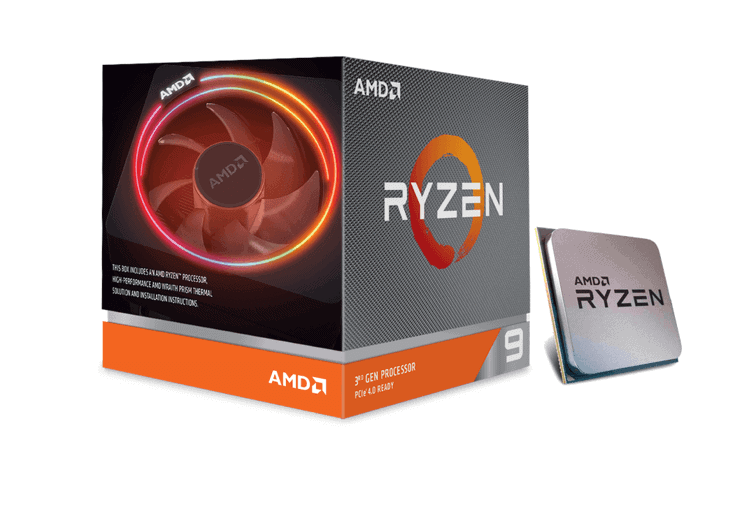
The new amd Ryzen 9 3900X from AMD is the paramount mainstream processor on the market that can deliver outstanding performance while being on the affordable segment (considering cores and threads).
AMD better understood the definition of the term ‘best gaming processor’ and mastered the art of producing the best CPUs for gaming while minding different constraints. Especially the new AMD Ryzen 9 3900X which comes with a whooping 12-cores and 24-threads is priced reasonably well. The Intel Core i9-9900K which is similarly priced has only 8-cores and 16-threads. Nevertheless, the single-core performance on the Intel is a tad better than that of AMD. That doesn’t matter much as more games started to adopt multi-threaded CPUs.
| Brand | AMD |
|---|---|
| Cores | 12 |
| Threads | 24 |
| Max Turbo Speed | Up to 4.6GHz |
| TDP | 105 W |
AMD claims that it has significantly increased the IPC in its 3rd generation Ryzen chips by up to 15% which can ultimately yield better single-core performance compared to its predecessor, the AMD Ryzen 7 2700X. The Ryzen 9 3900X comes packed with a whopping 64MB of L3 cache and 6MB L2 cache. This is especially helpful in yielding high framerates in 1080p gaming chores.
Like most other 3rd generation CPUs, the AMD Ryzen 9 3900X comes equipped with the support for PCIe Gen 4. At the time of writing this article, the only graphics cards that use PCIe 4.0 are the AMD Radeon RX 5700 XT and AMD Radeon RX 5700. Apart from the graphics cards, you could also opt for an NVMe SSD with support for PCIe 4.0 to acquire greater access speeds compared to the previous-gen SSDs.
Technical Specifications, Pros & Cons of – Ryzen 9 3900X
 Tech Specs
Tech Specs
| CMOS | TSMC 7nm FinFET |
| Number of cores | 12 |
| Number of Threads | 24 |
| Processor Base Frequency | 3.8 GHz |
| Max Turbo Frequency | Up to 4.6GHz |
| Cache | Total L1 Cache: 768KBTotal L2 Cache: 6MBTotal L3 Cache: 64MB |
| Thermal Design Power (TDP) | 105 W |
| Memory channels | 2 |
| Memory Type | DDR4 |
| Processor Graphics | No |
| System Memory Specification | 3200MHz |
| PCI Express Version | PCIe 4.0 x16 |
| Sockets supported | Socket AM4 |
Final Review
In real-world testing, the 12-core, 24-thread AMD Ryzen 9 3900X performs like an absolute monster driving decent frame rates while playing most modern games. This is one of the best CPUs that one can count on for not only gaming but also for your productive chores, thanks to its 24-threads. The inclusion of PCIe 4.0 is another add-on as it can contribute to faster data access through SSDs and greater GPU performance. All and all, it is a go-to pick for those who wish to build a monstrous gaming PC.
The Quick Rule for Choosing the Best Processor for Gaming –
The word best shares the closest bond with the budget. Building a decent gaming rig isn’t just about buying a CPU tagged with the fancy figures. Fancy figures often come with a fancier price tag. As per the compatibility constraint, a fancy CPU also demands fancy components that ultimately skyrocket the overall build price. This isn’t fancy at all! As a rule of thumb, it is always advised to evenly invest on your rig. An overpowered CPU but underpowered components don’t reap your fruit even if they go past the compatibility factor.
Raved enough! It is high time you learn about the heroism and chivalry of the warriors on our list.
List of Best Gaming CPU’s – Intel & AMD Ryzen |
|
| Processor | Best For |
|---|---|
| 1. Intel Core i5-10600K | Best for average gaming chores |
| 2. AMD Ryzen 5 3600X | Best budget gaming CPU |
| 3. AMD Ryzen 7 3700X | Best for mid-range gaming CPU |
| 4. Intel Core i9-10900K | Best gaming – overall |
| 5. AMD Ryzen 9 3900X | Best for high-end gaming Processor |
Here’s our detailed guide to pick the perfect gaming CPU that suits you.
Which is the Best Gaming CPU 2021? Is it Intel or AMD Ryzen?
Now that you’re here, we assume, you have gone through our top gaming CPU recommendations. Some of the terms that we have used above might make you wonder especially if you are a newbie in the CPU world. To bust the jargon, we have elaborated each term here, bag in some knowledge.
TDP – Thermal design power
Thermal design power is the maximum amount of heat produced by a computer chip under any workload which can then be dissipated by a dedicated cooling solution attached to it. In other words, it is an indicator of the total power that a component draws. This term is applicable to CPUs, GPUs, or any other component that generates heat. Usually, processors with more cores and clock frequencies tend to have higher TDP values. However, a CPU with a higher TDP value will draw more power.
Heat sink – A heat sink (also commonly spelled heatsink)
The heatsink is a cooling device equipped to regulate the temperature of a CPU. A heatsink either utilizes fans or liquid cooling (active) or aluminum radiators (passive) for the cooling mechanism.
Core – A processor core (or simply “core”)
A core is usually the basic computation unit of the CPU. Technically, each core can run a single program context maintaining the correct program state, registers, and correct execution order, and performing the operations through ALUs. A CPU can have one or more cores that can handle individual tasks at a time. With the introduction of multithreading, each core can be further divided into more virtual cores to execute different processes simultaneously. In simple terms, the more are your cores, the better is its performance.
Thread – A thread is a virtual version of a CPU core
Threads are virtual components that divide the physical cores of a CPU into virtual multiple cores to handle more number of tasks simultaneously. Each physical CPU core can have up to 2 threads. In simpler words, if a CPU has 2 physical cores, it will have a total number of 4 threads. And if it has 8 cores, it can have 16 threads in total. Threads are especially helpful for applications that use graphical processing, video editing, and rendering. However, most modern games have now started to adopt the multithreaded processing to yield better gaming performance.
Clock Speed – The clock speed measures the number of CPU Instruction Cycles
Clock speed refers to the speed at which a CPU can execute instructions and is measured in hertz. For instance, a processor with a 4.8 GHz clock speed can process a total of 4.8 billion instructions per second. It is one of the most critical factors in order to yield better gaming CPU performance and other production workloads. As a simple notion, the more is your clock speed, the better will be the task handling capacity of your CPU.
Turbo Boost – Turbo Boost Technology is a way to automatically run the processor core faster than the marked frequency
The Turbo Boost or boost clock is a technology that allows a processor to run at a higher clock speed under demanding workloads. Both Intel and AMD have the provision for boosting the clock with some limitations. However, Turbo Boost refers to Intel’s proprietary term for boosting the clock. In other terms, Turbo Boost refers to a temporary clock where the CPU boosts its speed up to 0.5GHz over the factory clock as long as it can handle the temporary increase in the temperature and voltage before coming back to its base clock.
Overclocking – overclocking is the practice of increasing the clock rate of a computer
We hear this term a lot, especially in the gamer’s sphere. Overclocking is a technique used to speed up the computer beyond the manufacturer’s specification to make it run faster by increasing its instruction handling capacity. With the overclocking technique, one can significantly boost the CPU’s performance. However, when a CPU is overclocked it tends to heat up more. Therefore, a good cooling system is equipped. Moreover, overclocking if done incorrectly, can damage your CPU.
Socket type PGA (Pin Grid Array), LGA (Land Grid Array), or BGA (Ball Grid Array) –
The socket or CPU socket refers to the physical component on the motherboard where your CPU chip sits and is interfaced with the motherboard. Based on the physical design, the CPU sockets are majorly classified into three types. They are PGA (Pin Grid Array), LGA (Land Grid Array), or BGA (Ball Grid Array). LGA socket type is used by the Intel motherboards that have the pins as part of the socket itself. With AMD’s AM4 solution, PGA, the processor itself comes with the pins which fit into the holes on the socket. While the BGA socket is the one whose processor pins are directly soldered to the motherboard, most laptops come with the BGA socket.
Cache or Caching – Cache is a small amount of memory which is a part of the CPU
The cache is another important aspect to consider while picking a good gaming CPU. CPU caches are small pools of memory that are used to store information that the CPU is most likely to process in the next execution. The main goal of the cache system is to ensure that the CPU has the next chunk of data it is likely to process, already loaded into cache by the time the CPU goes looking for it. This ultimately increases the processing power of a CPU. Depending on the architecture, the cache memory is further divided into three – L1, L2, and L3. Just remember – more cache, better performance.
PCIe – (peripheral component interconnect express) PCIe
PCIe or peripheral component interconnect express is an interface found on the motherboard which is a standard for connecting high-speed components. Almost all desktop PC motherboards have a number of PCIe slots to which one can add a dedicated Graphics processor (aka GPU or video cards), Wireless interface cards, RAID cards or a solid-state drive (SSD). Depending on the standards, the PCIe interface is classified into different generations. Each generation has a different set of bandwidth, frequency, and also differs in the data transfer rate. However, the current advanced standard is PCIe 4.0.
IPC – Instructions per cycle
IPC stands for instructions per clock cycle which is a measure of the average number of instructions executed for each clock cycle. IPC is not usually listed as a spec and is measured through benchmark testing, so the best way to learn about it is to read reviews.
Bus Speed – Refers to the speed of the front-side bus (FSB)
Bus speed usually refers to the speed of the front-side bus (FSB) which connects the CPU to the northbridge. The speed of an FSB can range anywhere from 66 MHz to over 800 MHz. The computer’s performance is dramatically affected by the FSB speed as the CPU reaches the memory controller through the northbridge.
Things to consider while choosing Good Gaming CPUs
These are the ones that you need to look into before deciding on a good gaming CPU.
The first thing to start with while choosing the best gaming CPU is to decide on what you intend to use your build for. A CPU that is best at handling a specific task may not reap the same results when it comes to other activities. So, it is advised to better decide on your need and choose a CPU that checks in all of your boxes.
Below mentioned are a few popular goals you might want to consider.
A. Casual Gaming
Casual gaming doesn’t demand massive frame rates or doesn’t involve live-streaming your game time. It is more like a free time hobby. You don’t require to have an expensive gaming mammoth as popular AAA games aren’t your cup of tea. Being a casual gamer, you only look for a build that can run some low-intensive steam games and most esports titles. In this case, you could opt for a CPU that has a clock speed of 3.0 or higher and has at least 4 cores and 8 threads. And if your budget permits, you could opt for a processor with 6C/12T at the most.
B. Hardcore Gaming Builds
Hardcore gaming chores demand a powerful overall build. Being a hardcore gamer, your prime goal is to achieve higher frame rates. Usually, it used to be the scenario where there isn’t a need for a fancy number of cores and threads for high-end gaming. Things started to change now. Most modern games are adapted to distributing loads between cores and threads. So, you might want to get a percent processor with at least 6 cores and 12 threads with clock speeds over 4 GHz. Higher FPS games demand a lot of graphical power. Invest your money wisely on a decent dedicated GPU, faster RAM, and a good SSD.
C. Stream as you game
Most people love to stream as they game. This has been a trend for quite some time now. Popular platforms like YouTube and Twitch accept live streams from your gaming sessions. This requires a lot of processing power which technically means that you will be needing a processor with relatively more cores and threads than a typical gaming build. A decent gaming processor with at least 8 cores and 16 threads and having a clock speed of over 4.0 GHz should do the job.
D. Content Creation/Productivity
If you are a full-time content creator who deals with a lot of video editing, graphical processing, and rendering chores and occasionally plans to use it for gaming, you should gift yourself a CPU with more thread count and decent clock speeds. A processor with at least 8 cores and 16 threads having clock speeds over 4.0 GHz can be an ideal pick.
Frequently Asked Questions about – How to Choose Top gaming CPU in 2021?
Below mentioned are some of the quests about the best gaming processor that we hear a lot from our readers. We assume most of your askings are answered in this section. If you still have something to ask, feel free to drop a comment down below. One of our editorial board team members should respond soon.
If you are a hardcore gamer and if popular AAA games are your cup of tea and also if your gaming involves occasional streaming, look no further than the AMD Ryzen 9 3900X.
AMD with its recent line-up clearly has an upper hand over Intel CPUs. The AMD Ryzen AMD Ryzen 7 3700X for instance can be a gaming beast if paired with a decent graphics processor.
Intel has been struggling in the market lately with AMD taking over especially with its latest gaming processors. Even the flagship processors from Intel lack the cutting edge PCIe 4.0 support while most budget releases from AMD house it. Intel clearly needs to work in many areas to keep its foot firm, especially in the gaming industry.
No! It is a lame that the most expensive flagship from Intel doesn’t share support for the PCIe 4.0 while most affordable CPUs from AMD do support this.
Though the Intel Core i9-10900K doesn’t get the lion’s share in most aspects compared to AMD, the Intel Core i9-10900K is still one of the best gaming CPUs in 2020 for its tad better single-threaded performance.
 Tech Specs
Tech Specs